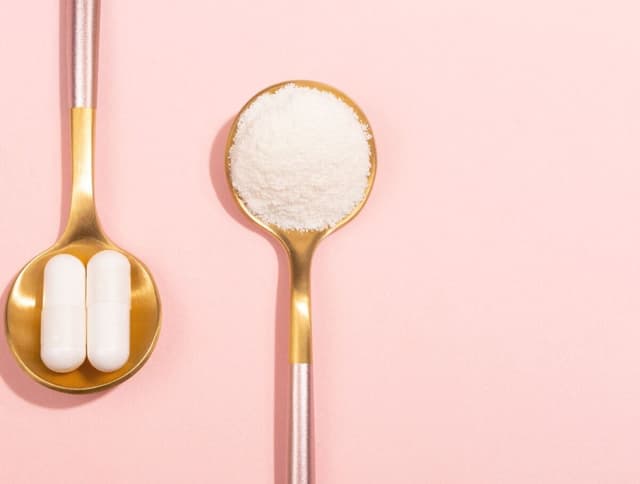Loading Phase for Creatine: How to Do It and Who Should Consider It

January 3, 2024
Creatine is one of the most researched and widely used supplements in the fitness world, renowned for its ability to boost performance, increase muscle mass, and enhance recovery. For those looking to maximize their results, the loading phase is often recommended as the fastest way to saturate your muscles with creatine. But how exactly do you implement the loading phase, and is it necessary for everyone? In this article, we'll explore everything you need to know about the creatine loading phase, who should consider it, and how to choose the best creatine for your needs.
What Is the Creatine Loading Phase?
The creatine loading phase is an approach designed to rapidly increase the creatine stores in your muscles. Creatine works by replenishing ATP (adenosine triphosphate), the primary energy source for high-intensity exercise. By saturating your muscles with creatine, you can boost your performance and muscle gains more quickly.
During the loading phase, individuals typically take 20 grams of creatine per day for about 5 to 7 days. This is divided into four 5-gram servings throughout the day to ensure consistent absorption. After this phase, they transition to a maintenance dose of 3 to 5 grams daily.
Many users report faster results when they go through a loading phase, but it's important to understand whether this approach is right for you. In the following sections, we'll delve into the pros and cons of this method and help you decide if it's necessary for your fitness journey.
Why Consider the Creatine Loading Phase?
Rapid Muscle Saturation
One of the main reasons people opt for the creatine loading phase is to speed up the process of saturating the muscles with creatine. Normally, if you take the standard maintenance dose of 3 to 5 grams per day, it can take around 3 to 4 weeks for your muscles to reach full saturation. By starting with a loading phase, you can achieve this saturation in less than a week.
This rapid approach is particularly useful if you’re looking to see performance improvements quickly. For example, if you're preparing for an athletic competition or want to break through a plateau in your training, the loading phase might be a good choice. With faster muscle saturation, you can potentially notice increased energy, improved workout performance, and muscle growth sooner.
Benefits for Strength and Power Athletes
Athletes involved in high-intensity, short-duration activities like weightlifting, sprinting, or HIIT (High-Intensity Interval Training) may benefit the most from a creatine loading phase. These sports rely heavily on the ATP energy system, which creatine enhances. By ensuring your muscles are fully saturated with creatine, you can:
- Increase strength and power output
- Reduce muscle fatigue
- Enhance muscle recovery
For example, studies have shown that athletes using the best creatine supplements with a loading phase can improve their sprint performance by up to 5% and increase their bench press strength by up to 8%.
Faster Results for Beginners
If you're new to using creatine, you might be eager to see results quickly. For beginners, the loading phase can provide an almost immediate boost in muscle volume and strength, which can be motivating. The visible results can help maintain consistency in your training and supplementation regimen, which is crucial for long-term success.
Who Should Skip the Creatine Loading Phase?
No Need for Slow Gains
The loading phase is not essential for everyone. If you're patient and don't mind waiting a few weeks to see the benefits, taking the standard maintenance dose of 3 to 5 grams per day without loading will eventually lead to the same muscle saturation levels. The primary difference is the timeline.
For those who prefer a gradual approach or have no upcoming athletic events, skipping the loading phase and sticking to the daily maintenance dose may be more practical. You'll still reap the benefits of creatine over time, but at a slower pace.
Digestive Sensitivity
Some people experience mild digestive discomfort when taking large doses of creatine, especially during the loading phase. Symptoms can include bloating, cramping, or diarrhea. If you have a sensitive stomach or have experienced these side effects in the past, it's better to stick with a lower, more consistent dose.
One way to minimize the risk of digestive issues is by choosing a high-quality supplement, such as creatine monohydrate. Many consider this the best creatine for absorption and effectiveness. You could also try splitting up the doses even further during the loading phase, or mixing the creatine with plenty of water.
Our Top Recommendations

Optimum Nutrition Micronized Creatine Monohydrate Powder
Micronized for easy mixing, supports muscle growth and endurance.
See on Amazon$0.35 per 5g serving

Nutricost Creatine Monohydrate Micronized Powder
Third-party tested, non-GMO, 5g of pure creatine per serving.
See on Amazon$0.2 per 5g serving

NSF Certified, supports muscle power and recovery.
See on Amazon$0.46 per 5g serving

ProMix Creatine Monohydrate Powder
Micronized, additive-free, ideal for performance and recovery.
See on Amazon$0.36 per 5g serving

NOW Foods Sports Nutrition Unflavored
100% pure creatine, GMP certified, boosts strength and endurance.
See on Amazon$0.2 per 5g serving
Weight Gain Concerns
Creatine is known to cause water retention in the muscles, which is typically a good thing for athletic performance. However, this can lead to a temporary increase in body weight, as the muscles draw in more water. If you're an athlete in a weight-sensitive sport, such as gymnastics or wrestling, you may want to avoid the loading phase to minimize rapid water weight gain. Instead, opt for the daily maintenance dose to achieve the benefits of creatine without drastic changes to your body composition.
How to Properly Execute a Creatine Loading Phase
If you’ve decided the loading phase is right for you, follow these simple steps to ensure you’re getting the most out of your supplement:
1. Choose the Best Creatine
First, select a high-quality creatine supplement. Creatine monohydrate is widely regarded as the best option due to its excellent absorption rate and proven effectiveness. There are other forms of creatine on the market, such as creatine HCL and creatine ethyl ester, but monohydrate remains the most researched and trusted type.
When shopping for the best creatine, look for products that are:
- Pure (no unnecessary fillers or additives)
- Micronized for better solubility
- From a reputable brand
2. Stick to the Loading Protocol
During the first 5 to 7 days, aim for a total of 20 grams of creatine per day, split into 4 doses of 5 grams each. The goal is to saturate your muscles quickly. Here’s a suggested schedule:
- Morning: 5 grams with breakfast
- Afternoon: 5 grams with lunch
- Pre-workout: 5 grams 30 minutes before exercise
- Evening: 5 grams with dinner
Take creatine with meals, as the presence of carbohydrates can help improve absorption. For example, pairing creatine with a post-workout shake that includes protein and carbs can enhance its effectiveness.
3. Transition to the Maintenance Dose
After the loading phase, reduce your intake to the maintenance dose of 3 to 5 grams per day. Continue this indefinitely or during the training period where you want to maximize creatine's benefits. Many athletes choose to cycle off creatine for a few weeks after prolonged use, but there's no evidence to suggest this is necessary.
4. Stay Hydrated
Creatine pulls water into your muscles, which is why it's essential to stay hydrated during the loading phase. Aim to drink at least 8-10 glasses of water per day to avoid dehydration and to help your muscles function optimally.
Conclusion: Should You Try the Creatine Loading Phase?
The creatine loading phase can be an effective way to boost your workout performance, especially if you’re looking for fast results. By saturating your muscles with creatine quickly, you can experience improved strength, power, and recovery in just a few days. However, the loading phase is not necessary for everyone. If you prefer a gradual approach, sticking to a maintenance dose will eventually provide the same benefits, albeit at a slower rate.
For those who want the quickest gains, the loading phase may be worth considering, but be mindful of potential side effects like digestive discomfort or temporary weight gain. Whether you decide to load or not, make sure to choose the best creatine supplement to support your goals.
Ready to start your creatine journey? Check out our articles and find the perfect fit for your training needs.






